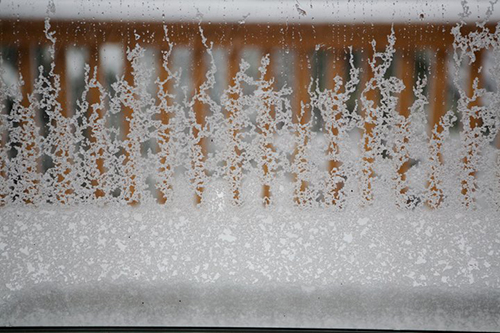
Albert Camus is quoted as having said, “In the depth of winter, I finally learned that within me there lay an invincible summer.” Depending on where you are in the world, December 21 or 22 marks the winter solstice in the northern hemisphere: the official beginning of winter, and the longest night and shortest day of the year. Many Westerners live with the belief that Winter Solstice celebrations are the stuff of British pagan traditions dating back thousands of years.
In reality, Winter Solstice is one of the most honored celebrations in cultures around the world from the Buddhists of Vietnam to the Swedish festival of St. Lucia.
Winter Solstice Food Traditions
The Dōngzhì Festival
Winter solstice plays a critical role in shaping the Chinese way of living, and various kinds of winter solstice eating traditions are still enjoying tremendous popularity in China. “Besides eating more warm and heated food in order to protect the body against the cold weather, people should pay more attention to the healthy eating around the winter solstice because it is the best time for the human body to uptake nutrition and nourish itself.”
Some Chinese traditionally eat dog to “drive away the winter chill”
“The kinds of food people eat during the Winter Solstice vary from place to place. In Northern China, many people eat mutton and dog meat. These are hot foods, bringing warmth to the body and dispelling the coldness.”
It appears that not everyone is in agreement with the tradition of eating dog. I found mention of an anti-dog-eating-campaign.
“On the winter solstice day, people are more inclined to suffer from the excessive internal heat because of the large temperature difference in and out of the house. A typical result of internal heat is dental ulcer. People usually prefer hot food during cold weather, and the internal heat will be further fostered as a result. Therefore, Chinese medical specialists would suggest people to have more soups and porridges, which are all effective to reduce internal heat, and to nourish the body fluid.
It is also worth mentioning that black foods, such as black sesame, black beans and black rice, are recommended by Chinese medical doctors as perfect choices for winter solstice day. Black foods play critical roles in nourishing and sustaining a healthy kidney which functions the weakest during winter solstice day.”
Read more:
Chinese eating traditions on winter solstice
Winter Solstice festival foods
Yule
Among ancient Germanic peoples, Winter Solstice was known as Yule. Yule or Yuletide (“Yule-time”) was celebrated as a pagan religious festival, though it was later absorbed into, and equated with, the Christian festival of Christmas. The festival was originally celebrated from late December to early January on a date determined by the lunar Germanic calendar. The festival was placed on December 25 when the Christian calendar (Julian calendar) was adopted. Celebrations included burning a Yule log, singing Yule songs, and sacrificing and eating a Yule pig (this tradition has given rise to the popular Christmas ham), as well as a Yule goat.
Wassail, a hot and spicy beer, may also have originally been associated with the midwinter festival. Even today, many northern Europeans enjoy the drink during this time of the year. While we don’t recommend juice, per say … perhaps on festival occasions, eh?! I envision these recipes could also be fermented with water kefir grains.
Wassail
1 large orange
whole cloves
12 cups (3 quarts) apple cider
4 cups (1 quart) apricot nectar
1/2 cup fresh lemon juice
6 cinnamon sticks
Insert cloves into the orange about 1/2″ apart. Bake the orange in a 350° oven. After about 30 minutes, remove the orange and puncture it in several places with a fork or an ice pick.
Place the orange in a large pot together with the apple cider, apricot nectar, lemon juice and cinnamon sticks, and cover it. Bring it to a boil and simmer over low heat for another 30 minutes.
Transfer the Wassail to a punch bowl or crockpot. Float the orange and cinnamon sticks.
Makes 32 servings.
Another variation: Crockpot Wassail
1/2 gallon apple cider
1 cup cranberry juice such as Lakewood Organic or R.W. Knudsen Family
1/2 cup honey (Recommended options for organic raw honey are YS Bee Farms, Wholesome Sweeteners and WeeBee)
2 orange cut into sections
2 or 3 cinnamon sticks
1 tablespoon allspice
1 teaspoon ginger
Plug in crockpot and put on low. Add the apple cider and cranberry juice.
Mix well with spoon. Add honey.
Cut oranges and add to the mixture. Drop in cinnamon stick
Add allspice and ginger stir well. Add more apple cider if needed.
Cook on low heat for two hours or more. Stir occasionally. Serve hot.
Other Recipes
Holiday Wassail from Colonial Williamsburg
In the United States, informal Winter Solstice gatherings often include a feast. Although there is no prescribed menu for these meals, the focus is often on fall harvest foods: berries and nuts, squash, potatoes, and hunted game.
2 Responses to Winter Solstice – Eating Dogs?! … and Drinking Wassail
I have friends who do an all night vigil for Yule/Solstice, but with my work schedule I’ve never been able to do it myself. Hoping that having school out of the way now means I can do it next year. And if I do, I’ll be making glögg to keep me company. (a recipe I won’t share, but I promise it’s wonderful!)
What lovely wassail recipes! I did not know about some of those winter solstice traditions! I love learning about other cultures like that! I too look to the winter time as a time of nourishment. When so many are looking to “cleanse” for the new year, restrict diets, and fast, I look to winter as a time to hibernate, nourish, and replenish. Spring is a time of cleanse for me.